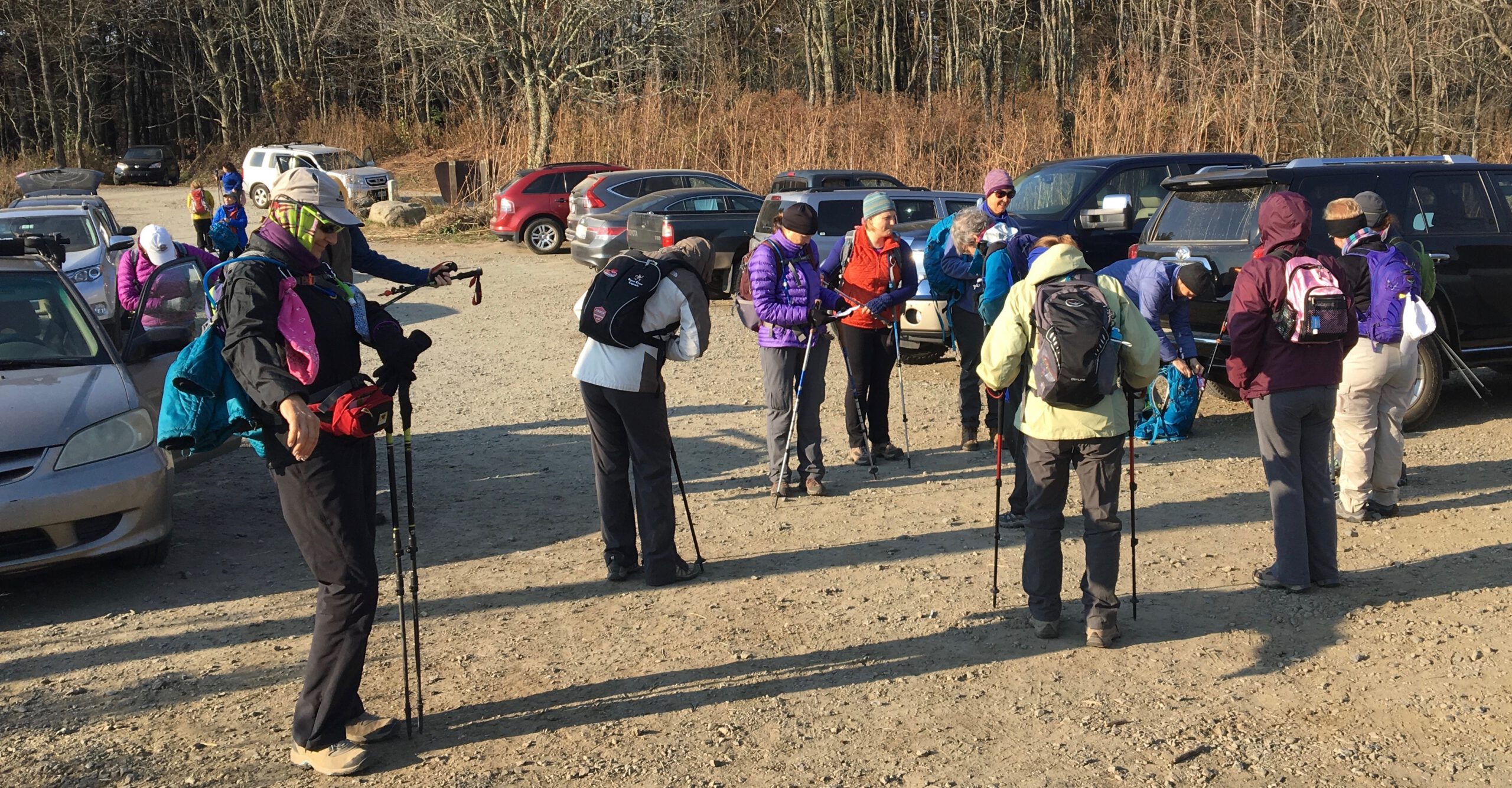
Through our GetHiking! program and our involvement in the Hike NC! hiking initiative launched this fall by Blue Cross and Blue Shield of North Carolina, an increasing number of folks are discovering hiking. To help this next wave, we’ll be devoting space over the next couple of weeks to help the new wave of hikers get established on the trail. Today: Do clothes make the hiker?
Do clothes make the hiker?
They may not make the hiker, but they can sure make the hiker more comfortable, and thus, happier. Assuming you’ve taken a short hike or two in your civvies, enjoyed it, and are ready to advance to longer, more challenging hikes, here are some quick thoughts on what you should wear to make you happy — and safe — on the trail:
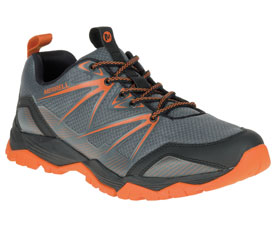
Merrell Capra Rise hiking shoes Shoes. Unless you’ve got wobbly ankles or plan to carry a heavy pack, hiking shoes, rather than boots, should suffice. Hiking shoes offer two big advantages over the running shoes/gym shoes you’ve been wearing so far: the rugged, lugged soles are great at gripping the dirt, rocks and roots on the trail, and their sturdier construction offers the added support you’ll need on uneven terrain. Your most important piece of gear. Expect to pay around $100.
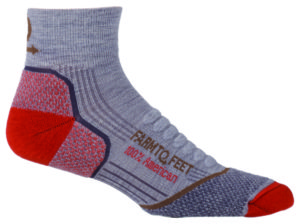
Farm To Feet Damascus hiking socks Socks. A close second to shoes in terms of importance: a good pair of wool socks. Hiking socks should be snug (loose socks give rise to blisters) and keep your tootsies toasty in winter but sweat-free in summer (hence the range of light, medium and heavy hiking socks). Bonus: they should be festive (many are). Buy local: it’s easy to do — Farm to Feet’s line are made just up the road in Mount Airy, and Smartwool has deep roots in Tennessee. Expect to pay $15 to $20 for a good pair of hiking socks.
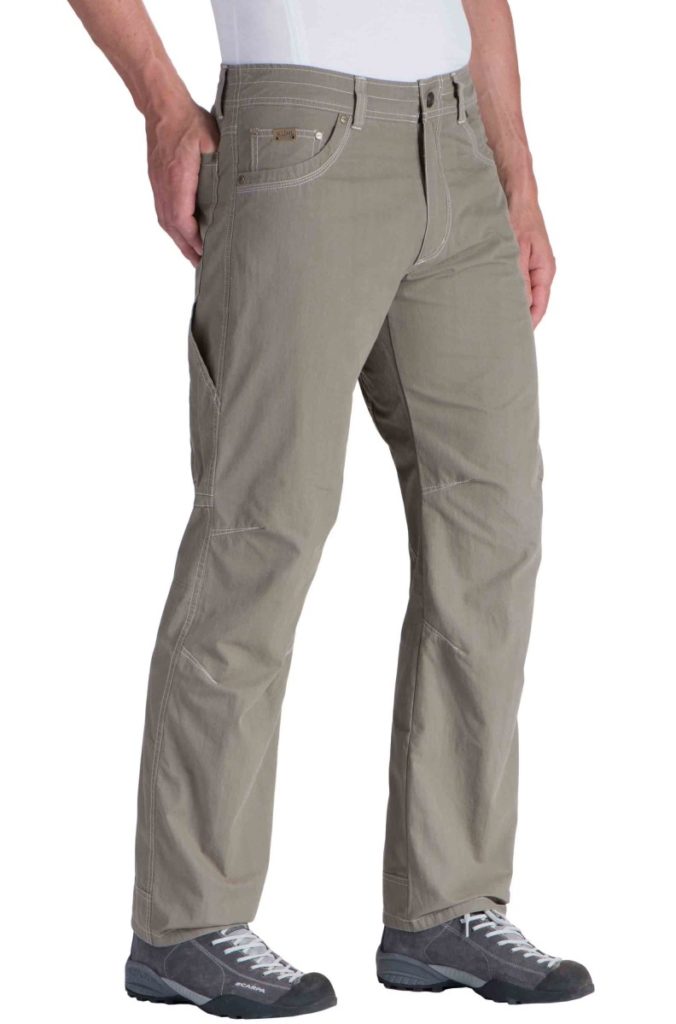
Kuhl Revolvr Pants Pants. We’re big fans of convertible pants, especially living in the South. This time of year, for instance, you can start down the trail early in chill weather; when the sun starts doing its thing, you zip off the legs and — shazzam! — instant shorts. Make sure whatever pants you get are fast-drying synthetics; it’s a bad scene to get caught in a cold rain in cotton pants and have to slog on in clingy, cold, trousers. Expect to pay $75 and up.
- Top. Dressing gets a wee more complicated when it comes to your torso. Regardless of weather, next to your skin you’ll want a thin wool or synthetic layer that wicks the sweat away from your body and dries quickly. (Cotton gets wet, stays wet, sticks to your skin.) If it’s cool out, you’ll want a second, slightly heavier layer to throw on over the aforementioned base layer. This layer, too, should be synthetic (a thin fleece works well). When the mercury dips into the 40s and 30s, a slightly heavier fleece layer is in order. (Layering is a whole ‘nother topic that we’ll address later.) Decent thin base layers can range from $35 to more than $100 (for Merino wool); fleece jackets start around $80.
- Gloves. In winter, you’ll need ‘em: gloves and hats can be your two best friends when staving off the cold. The good news: even a $10 pair
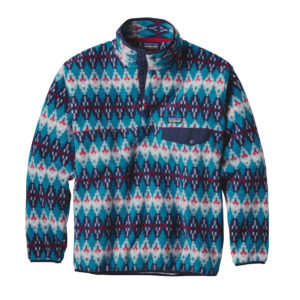
Patagonia Synchilla fleece pullover of garden-type gloves can be helpful in temperatures down into the 40s. Below that, you’ll want something more sophisticated that’s both wind resistant and water repellant.
- Hat. Brimmed hats (starting around $35) offer protection from the broiling sun in summer, fleece caps (starting around $25) keep heat from escaping out the top of your noggin’ in winter. The trail is not the place to worry about hat hair.
To check out your clothing options, visit our shop here.
